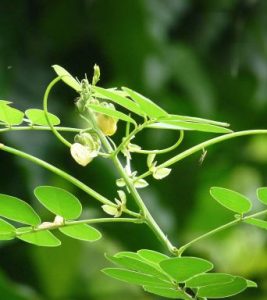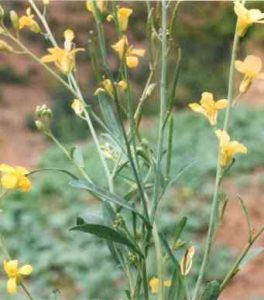 Common Name: Sickle Senna
Common Name: Sickle Senna
Description
Senna obtusifolia (Chinese senna, American sicklepod or sicklepod) is a legume in the genus Senna, sometimes separated in the monotypic genus Diallobus. It grows wild in North, Central, and South America, Asia, Africa, and Oceania, and is considered a particularly serious weed in many places. It has a long-standing history of confusion with Senna tora and that taxon in many sources actually refers to the present species. . . . .Read more
References
Switchboard
Wikipedia
Month: March 2013
Brassica carinata
 Common Name: Ethiopia Mustard
Common Name: Ethiopia Mustard
Description
Brassica carinata (Ethiopian rape,Ethiopian mustard, Abyssinian mustard) is a member of the Triangle of U species (U, 1935) in the agriculturally significant Brassica genus. It has 34 chromosomes with genome composition BBCC, and is thought to result from an ancestral hybridisation event between Brassica nigra (genome composition BB) and Brassica oleracea (genome composition CC) (Prakash and Hinata, 1980). Although B. carinata is cultivated as an oilseed crop in Ethiopia (Alemayehu and Becker, 2004), it has generally high levels of undesirable glucosinolates and erucic acid (Getinet et al. 1997), making it a poor choice for general cultivation as an oilseed crop in comparison to the closely related Brassica napus (Rapeseed) . . . .Read more
References
Switchboard
Wikipedia
Basella alba
 Common Name: Vine spinach
Common Name: Vine spinach
Description
Basella alba is an edible perennial vine in the family Basellaceae. It is found in tropical Asia and Africa where it is widely used as a leaf vegetable. It is native to the Indian Subcontinent, Southeast Asia and New Guinea. It is reportedly naturalized in China, tropical Africa, Brazil, Belize, Colombia, the West Indies, Fiji and French Polynesia . . . .Read more
References
Switchboard
Wikipedia
Amaranthus tricolor
 Common Name: Vegetable amaranth
Common Name: Vegetable amaranth
Description
Amaranthus tricolor is an ornamental plant known as tampala, tandaljo or tandalja bhaji in India,[3] callaloo in the Caribbean and Joseph’s coat after the Biblical figure Joseph, who is said to have worn a coat of many colors. Although it is native to South America, many varieties of amaranth can be found across the world in a myriad of different climates due to it being a C4 carbon fixation plant, which allows it to convert carbon dioxide into biomass at an extremely efficient rate when compared to other plants. Cultivars have striking yellow, red and green foliage. . . . .Read more
References
Switchboard
Wikipedia